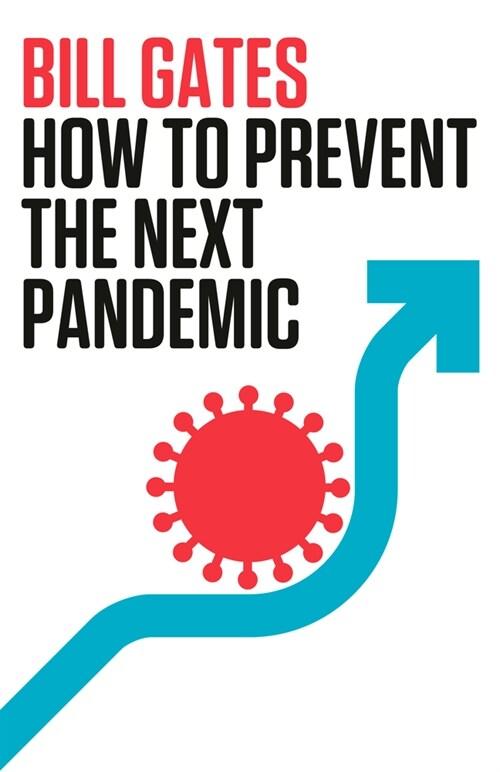책 이미지
![[eBook Code] The Science of Forensic Entomology](/img_thumb/9781118403044.jpg)
책 정보
· 분류 : 외국도서 > 의학 > 법의학
· ISBN : 9781118403044
· 쪽수 : 400쪽
목차
About the companion website xii
Preface xiii
Chapter 1 Role of forensic science in criminal investigations 1
Overview 1
The big picture 1
1.1 What is forensic science? 1
1.2 Application of science to criminal investigations 3
1.3 Recognized specialty disciplines in forensic science 9
Chapter review 10
Test your understanding 11
Notes 12
References cited 12
Supplemental reading 12
Additional resources 12
Chapter 2 History of forensic entomology 13
Overview 13
The big picture 13
2.1 Historical records of early human civilizations suggest understanding of insect biology and ecology 13
2.2 Early influences leading to forensic entomology 16
2.3 Foundation for discipline is laid through casework, research, war, and public policy 18
2.4 Turn of the twentieth century brings advances in understanding of necrophagous insects 21
2.5 Forensic entomology during the “great” wars 22
2.6 Growth of the discipline due to the pioneering efforts of modern forensic entomologists leads to acceptance by judicial systems and public 23
Chapter review 24
Test your understanding 26
Notes 26
References cited 26
Supplemental reading 27
Additional resources 27
Chapter 3 Role of insects and other arthropods in urban and stored product entomology 29
Overview 29
The big picture 29
3.1 Insects and other arthropods are used in civil, criminal, and administrative matters pertinent to the judicial system 29
3.2 Civil cases involve disputes over private issues 31
3.3 Criminal law involves more serious matters involving safety and welfare of people 31
3.4 Administrative law is concerned with rulemaking, adjudication, or enforcement of specific regulatory agendas 32
3.5 Stored product entomology addresses issues of both a civil and criminal nature 33
3.6 Urban entomology is focused on more than just “urban” issues 38
Chapter review 42
Test your understanding 44
Notes 45
References cited 45
Supplemental reading 46
Additional resources 46
Chapter 4 Introduction to entomology 47
Overview 47
The big picture 47
4.1 Insecta is the biggest class of the biggest phylum of living organisms, the Arthropoda 47
4.2 The typical adult insect has three body parts, six legs, two antennae, compound eyes, external mouthparts, and wings 50
4.3 Tagmosis has produced the three functional body segments of insects: the head, thorax, and abdomen 51
4.4 Sensory organs and their modifications allow insects to perceive and react to their environments 55
4.5 The structure and function of an insect’s digestive system is intimately tied to the food that it prefers to eat 57
4.6 A tubular tracheal system transports oxygen to the body’s cells while blood moves through the body without the aid of a vascular system 58
4.7 The nervous system of insects integrates sensory input and drives many aspects of behavior 60
4.8 In order to grow, insects need to shed their “skin” 61
4.9 Many insects look and behave entirely differently as a larva than as an adult – the magic of metamorphosis 61
4.10 The desire to reproduce is a driving force for unique reproductive behaviors and copulatory structures in insects 62
Chapter review 64
Test your understanding 65
References cited 66
Supplemental reading 67
Additional resources 67
Chapter 5 Biology, taxonomy, and natural history of forensically important insects 69
Overview 69
The big picture 69
5.1 A variety of different insects and terrestrial arthropods are attracted to a dead body 69
5.2 The fauna of insects feeding on a body is determined by location, time, and associated organisms 71
5.3 Necrophagous insects include the taxa feeding on the corpse itself 72
5.4 Parasitoids and predators are the second most significant group of carrion-frequenting taxa 85
5.5 Omnivorous species include taxa which feed on both the corpse and associated arthropods 87
5.6 Adventitious species include taxa that use the corpse as an extension of their own natural habitat 89
Chapter review 90
Test your understanding 92
References cited 92
Supplemental reading 94
Additional resources 94
Chapter 6 Reproductive strategies of necrophagous flies 95
Overview 95
The big picture 95
6.1 The need to feed: anautogeny and income breeders are common among necrophagous Diptera 95
6.2 Size matters in egg production 98
6.3 Progeny deposition is a matter of competition 100
6.4 Larvae are adapted for feeding and competing on carrion 102
6.5 Feeding aggregations maximize utilization of food source 103
6.6 Mother versus offspring: fitness conflicts 104
6.7 Resource partitioning is the path to reproductive success 105
Chapter review 106
Test your understanding 108
Notes 109
References cited 109
Supplemental reading 111
Additional resources 112
Chapter 7 Chemical attraction and communication 113
Overview 113
The big picture 113
7.1 Insects rely on chemicals in intraspecific and interspecific communication 113
7.2 Chemical communication requires efficient chemoreception 114
7.3 Semiochemicals modify the behavior of the receiver 115
7.4 Pheromones are used to communicate with members of the same species 116
7.5 Allelochemicals promote communication across taxa 118
7.6 Chemical attraction to carrion 120
7.7 Chemical attraction to carrion by subsequent fauna 122
Chapter review 124
Test your understanding 127
Notes 127
References cited 127
Supplemental reading 129
Additional resources 130
Chapter 8 Biology of the maggot mass 131
Overview 131
The big picture 131
8.1 Carrion communities are composed largely of fly larvae living in aggregations 131
8.2 Formation of maggot masses involves clustering during
oviposition or larviposition 132
8.3 Larval feeding aggregations provide adaptive benefits to individuals 134
8.4 Developing in maggot masses is not always beneficial to conspecifics or allospecifics 140
Chapter review 143
Test your understanding 145
References cited 146
Supplemental reading 149
Additional resources 149
Chapter 9 Temperature tolerances of necrophagous flies 151
Overview 151
The big picture 151
9.1 Necrophagous insects face seasonal, aseasonal, and self-induced (heterothermy) temperature extremes 152
9.2 Temperature challenges do not equal death: necrophagous insects are equipped with adaptations to survive a changing environment 153
9.3 Life-history features that promote survival during proteotaxic stress 154
9.4 Deleterious effects of high temperatures on necrophagous flies 158
9.5 Life-history strategies and adaptations that promote survival at low temperatures 160
9.6 Deleterious effects of low-temperature exposure 166
Chapter review 167
Test your understanding 170
Notes 171
References cited 171
Supplemental reading 174
Additional resources 174
Chapter 10 Postmortem decomposition of human remains and vertebrate carrion 175
Overview 175
The big picture 175
10.1 Decomposition of human and other vertebrate remains is a complex process 175
10.2 Numerous factors affect the rate of body decomposition 177
10.3 When the heart stops: changes occur almost immediately but are not outwardly detectable 179
10.4 Body decomposition is characterized by stages of physical decay 184
Chapter review 187
Test your understanding 190
Notes 190
References cited 190
Supplemental reading 192
Additional resources 192
Chapter 11 Insect succession on carrion under natural and artificial conditions 193
Overview 193
The big picture 193
11.1 What’s normal about terrestrial decomposition? Typical patterns of insect succession on bodies above ground 194
11.2 Succession patterns under forensic conditions are not typical 196
11.3 Several factors serve as barriers to oviposition by necrophagous insects 198
11.4 The physical conditions of carrion decay can function as a hurdle to insect development 200
11.5 Insect faunal colonization of animal remains is influenced by conditions of physical decomposition 204
Chapter review 208
Test your understanding 211
Notes 211
References cited 212
Supplemental reading 214
Additional resources 214
Chapter 12 Postmortem interval 215
Overview 215
The big picture 215
12.1 The time since death is referred to as the postmortem interval 215
12.2 The role of insects in estimating the PMI 217
12.3 Modeling growth–temperature relationships 220
12.4 Calculating the PMI requires experimental data on insect development and information from the crime scene 222
12.5 The evolving PMI: changing approaches and sources of error 227
Chapter review 230
Test your understanding 232
Notes 233
References cited 233
Supplemental reading 235
Additional resources 235
Chapter 13 Insect alterations of bloodstain evidence 237
Overview 237
The big picture 237
13.1 Bloodstains are not always what they appear to be at the crime scene 237
13.2 Science is the cornerstone of bloodstain pattern analyses 238
13.3 Crash course in bloodstain analyses 240
13.4 Insect activity can alter blood evidence 243
13.5 Insect feeding activity on bloodstains or fresh blood can yield regurgitate spots or transference 243
13.6 Digested blood is eliminated from insects as liquid feces or frass 245
13.7 Parasitic insects can confound blood evidence by leaving spot artifacts 246
Chapter review 246
Test your understanding 248
Notes 248
References cited 249
Supplemental reading 249
Additional resources 250
Chapter 14 Necrophagous and parasitic flies as indicators of neglect and abuse 251
Overview 251
The big picture 251
14.1 Parasitic and necrophagous flies can infest humans, pets, and livestock 252
14.2 Not all forensically important insects wait until death to feed 253
14.3 Chemoattraction of flies to the living does not necessarily differ from the odors of death 255
14.4 Necrophagous and parasitic flies display oviposition and development preferences on their vertebrate “hosts” 257
14.5 Larval myiasis can be fatal 258
Chapter review 261
Test your understanding 263
Notes 263
References cited 264
Supplemental reading 265
Additional resources 266
Chapter 15 Application of molecular methods to forensic entomology 267
Overview 267
The big picture 267
15.1 Molecular methods: living things can be defined by their DNA 267
15.2 Evidence collection: preserve DNA integrity 270
15.3 Molecular methods of species identification 270
15.4 DNA barcoding protocol 275
15.5 Problems encountered in barcoding projects 279
15.6 Gut content: victim and suspect identifications 280
15.7 Molecular methods and population genetics 281
15.8 Molecular methods: non-DNA based 282
15.9 Validating molecular methods for use as evidence 284
15.10 Future directions 284
Chapter review 285
Test your understanding 287
References cited 288
Supplemental reading 291
Additional resources 292
Chapter 16 Archaeoentomology: insects and archaeology 293
Overview 293
The big picture 293
16.1 Archaeoentomology is a new “old” discipline 293
16.2 Concepts and techniques from forensic entomology can be applied to archaeology 295
16.3 Ancient insects and food: connection to stored product entomology 296
16.4 Ancient insects as pests: beginnings of synanthropy and urban entomology 298
16.5 Ancient insects and mummies: revelations about past lives and civilizations 301
16.6 Forensic archaeoentomology: entomological investigations into extremely “cold” cases 304
Chapter review 304
Test your understanding 306
Notes 307
References cited 307
Supplemental reading 309
Additional resources 309
Chapter 17 Insects as weapons of war and threats to national security 311
Overview 311
The big picture 311
17.1 Terrorism and biological threats to national security are part of today’s world 312
17.2 Entomological weapons are not new ideas 314
17.3 Direct entomological threats to human populations are not all historical 316
17.4 Impending entomological threats to agriculture and food safety 318
17.5 Insect-borne diseases as new or renewed threats to human health 319
17.6 Insects can be used as tools for national security 321
Chapter review 324
Test your understanding 327
Notes 328
References cited 328
Supplemental reading 329
Additional resources 329
Chapter 18 Deadly insects 331
Overview 331
The big picture 331
18.1 Insects that bite, sting or secrete cause fear, loathing, and death 332
18.2 Insects that cause death 333
18.3 Human envenomation and intoxication by insect-derived toxins 338
18.4 Insects that injure humans rely on chemically diverse venoms and toxins 338
18.5 Non-insect arthropods that should scare you! 342
18.6 Implications of deadly insects for forensic entomology 345
Chapter review 346
Test your understanding 349
Notes 349
References cited 350
Supplemental reading 351
Additional resources 351
Appendix I Collection and preservation of calyptrate Diptera 353
Collecting adult flies 353
Collecting fly larvae 355
Mounting and preserving specimens (adult flies) 355
References cited 357
Resources and links 357
Appendix II Getting specimens identified 359
Morphological identification of specimens on your own 359
Identification of specimens (by systematic expert) 360
References cited 361
Resources and links 361
Appendix III Necrophagous fly life table references 363
Glossary 367
Index 377













![[eBook Code] The Science of Forensic Entomology](./img_thumb/9781118403044.jpg)







![[eBook Code] Multimedia Networks (eBook Code, 1st)](/img_thumb/9781119090175.jpg)









